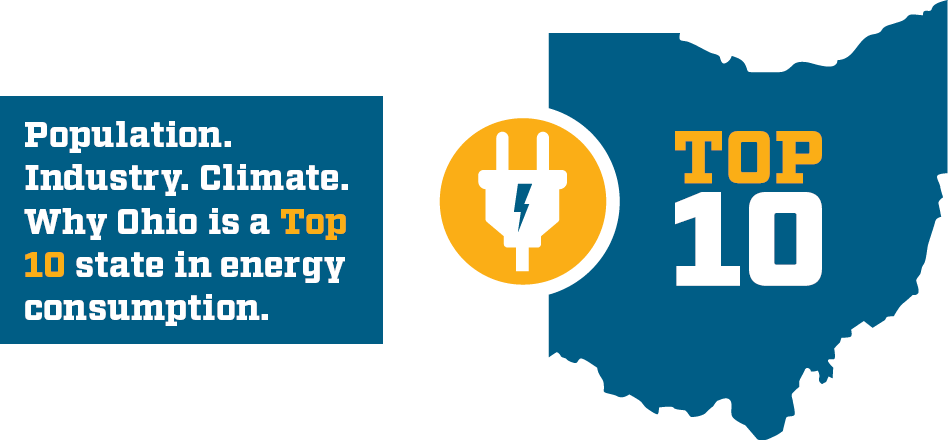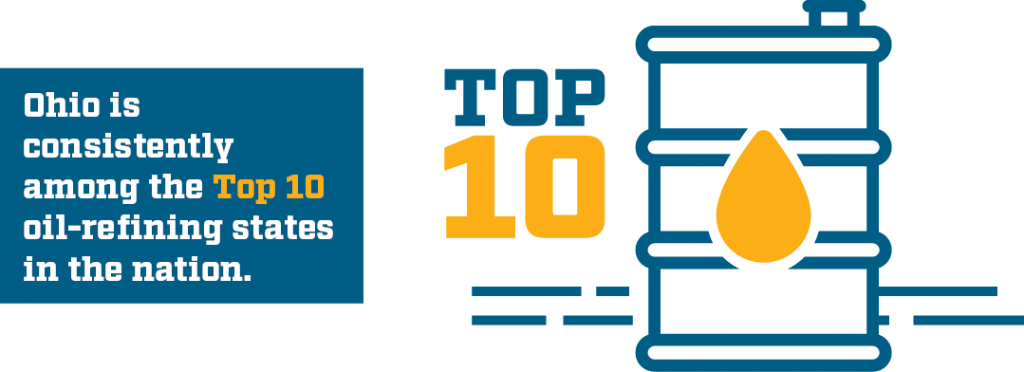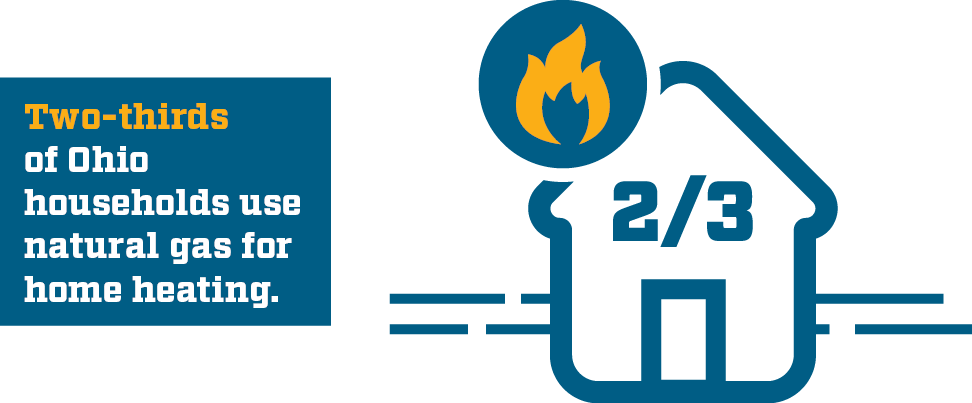Ohio State Reports and Facts
“While some Ohioans mistakenly believe they must choose between a healthy environment or accessing energy, the truth is, no choice is necessary. We can have both. We all want a cleaner environment and affordable energy, regardless of our political affiliation. That’s why it’s important that CEA’s Campaign for America’s Energy helps to remind our elected leaders of the opportunity Ohio’s energy resources provide and to understand how energy needs can be met while we also protecting our environment.”
– Guy Coviello, Vice President of Government Affairs, Youngstown Warren Regional Chamber of Commerce

Ohio is in the ‘heartland’ of America and is perhaps the quintessential American state. With the 7th largest GDP, Ohio is a top producer and consumer. The average Ohioan will spend around $3,044 on energy per year, and with an average household size of just under 2 and a half, this represents $7,519 or 15% of household income. For those living below the poverty line, – nearly 15% of the Ohio population – this percentage skyrockets to 42% of income. Due to the long and cold the winters, home heating is not something that Ohioans can simply choose to cut back on, even if money is tight.

Ohio is in the ‘heartland’ of America—and perhaps the quintessential American state. It has a diversified economy that relies heavily on manufacturing, which supports 700,000 jobs, $39 billion in annual payroll, and produces $50 billion in products.1 And Ohio factories lead the nation in the production of plastics and rubber, fabricated metals, and electrical equipment and appliances. Ohio is also a leading producer of steel along with cars and trucks.2
Other major industries in the state include transportation and logistics, agriculture, business services, energy production, education and health, and finance. The bottom line is that Ohio, is a force to be reckoned with, boasting a population of over 11 million people and a GDP of $625.7 billion—topping the list as the 7th largest in the United States.
In fact, Ohio works to provide important goods and services to people across the country and the world. So what is the common thread that moves through Ohio’s economy? Energy—without it goods couldn’t be produced or shipped.

Not only does Ohio use energy, it also produces it. A major benefit of the shale revolution has been its contribution to a vibrant energy sector, with Ohio employing nearly 200,000 direct and indirect workers in the energy industry. In addition to these workers, there are also 78,000 jobs focused on energy efficiency.3
One thing Ohioans do since they work hard—they play hard. With so many college and professional teams located in Ohio, there is so much to see! And just like industries across the state, teams and fans need affordable energy to enjoy the game. Whether you’re at the game for the perfect chargrilled burger at a tailgate or hearing the roar of the crowd under the stadium lights, its energy from Ohio and its neighboring states that brings the atmosphere alive.

By developing its own resources through the Shale Revolution, Ohio’s families and businesses have been able to realize affordable electricity and gasoline prices for its residents. And while Ohio has been a leader in energy, there is still room for improvement. Although the state is ranked among the top 10 power generators in the country, in-state generation does not meet the demand. Due to this lack of local power generation, Ohio is forced to receive surplus electricity from outside the state.4
But with more and more divisive rhetoric from anti-development groups, Ohio is at risk of adopting bad energy policies that could affect the way individuals, families and businesses balance their budgets and meet their bottom lines. It’s high time the discussion on energy changes, and that elected officials take the opportunity to adopt new policies that support all types of energy production and delivery as well as environmental stewardship.

Still, the average Ohioan is spending $3,604 annually on energy, and with its long, cold winters, home heating is not something that Ohioans can simply choose to cut back on, even when money is tight.5
For a low-income Ohioan living at the poverty line, that translates to nearly 30% of their individual income.6 With Ohio’s poverty rate at 14.6%, it is important that Ohio continues to have access to affordable energy.7

